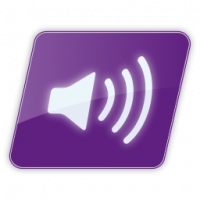PowerShell Audio: Difference between revisions
Gottkaiser (talk | contribs) (initial publication) |
|||
| Line 15: | Line 15: | ||
=Introduction= | =Introduction= | ||
PowerShell Audio is a PowerShell-driven interface for converting | PowerShell Audio is a PowerShell-driven interface for converting and tagging audio / music files. It is available under the Lesser GPL (v3) license, and is for Windows use only. | ||
== Features == | == Features == | ||
Revision as of 23:47, 23 December 2014
 audio conversion and tagging module for Windows PowerShell | |
| Developer(s) | Jebus |
| Release information | |
|---|---|
| Stable release | 1.0.0 (12 Dezember 2014) |
| Compatibility | |
| Operating system | Windows |
| Additional information | |
| Use | Digital Audio conversion, tagging |
| License | GNU GPLv3 |
| Website | GitHub project |
Introduction
PowerShell Audio is a PowerShell-driven interface for converting and tagging audio / music files. It is available under the Lesser GPL (v3) license, and is for Windows use only.
Features
- A unified interface to popular codecs (see Supported Formats).
- Fast and highly concurrent ("multi-threaded") for modern, multi-core systems.
- ReplayGain integration.
- Batch-analyze thousands of files quickly,
- save the results to disk,
- convert to Apple SoundCheck format,
- or apply the changes directly during encoding.
- Metadata preservation between formats.
- PowerShell interface brings powerful integration and scripting capabilities.
- API is open-source and extensible.
Supported Formats
Supported languages
- English
Example Usage
simple Examples
Convert a folder full of FLAC files into Lame MP3s:
Get-AudioFile *.flac | Export-AudioFile "Lame MP3" -Directory C:\Output
Lame uses VBR -q 3 by default. To list the default switches:
Get-AudioEncoderDefaultSettingList "Lame MP3"
To get all the available settings for Lame:
Get-AudioEncoderAvailableSettingList "Lame MP3"
All the available cmdlets are documented. For examples and a list of parameters use:
Get-Help Export-AudioFile -Full
advanced Examples
Add ReplayGain to a entire FLAC library and treat each directory as a separate album:
Get-ChildItem C:\Users\Myself\Music -Directory -Recurse | % { $_ | Get-ChildItem -File -Filter *.flac | Measure-AudioFile ReplayGain -PassThru | Save-AudioMetadata }
Convert a whole FLAC library to VBR AAC, with SoundCheck tags calculated from album ReplayGain information:
Get-ChildItem C:\Users\Myself\Music -Filter *.flac -Recurse | Get-AudioFile | Export-AudioFile "Apple AAC" -Directory "C:\Output\{Artist}\{Album}" -Setting @{AddSoundCheck = "Album"} -Name "{TrackNumber} - {Title}"
Convert a whole FLAC library to VBR MP3, with ReplayGain directly applied to the resulting volume levels:
Get-ChildItem C:\Users\Myself\Music -Filter *.flac -Recurse | Get-AudioFile | Export-AudioFile "Lame MP3" -Directory "C:\Output\{Artist}\{Album}" -Setting @{ApplyGain = "Album"} -Name "{TrackNumber} - {Title}"
